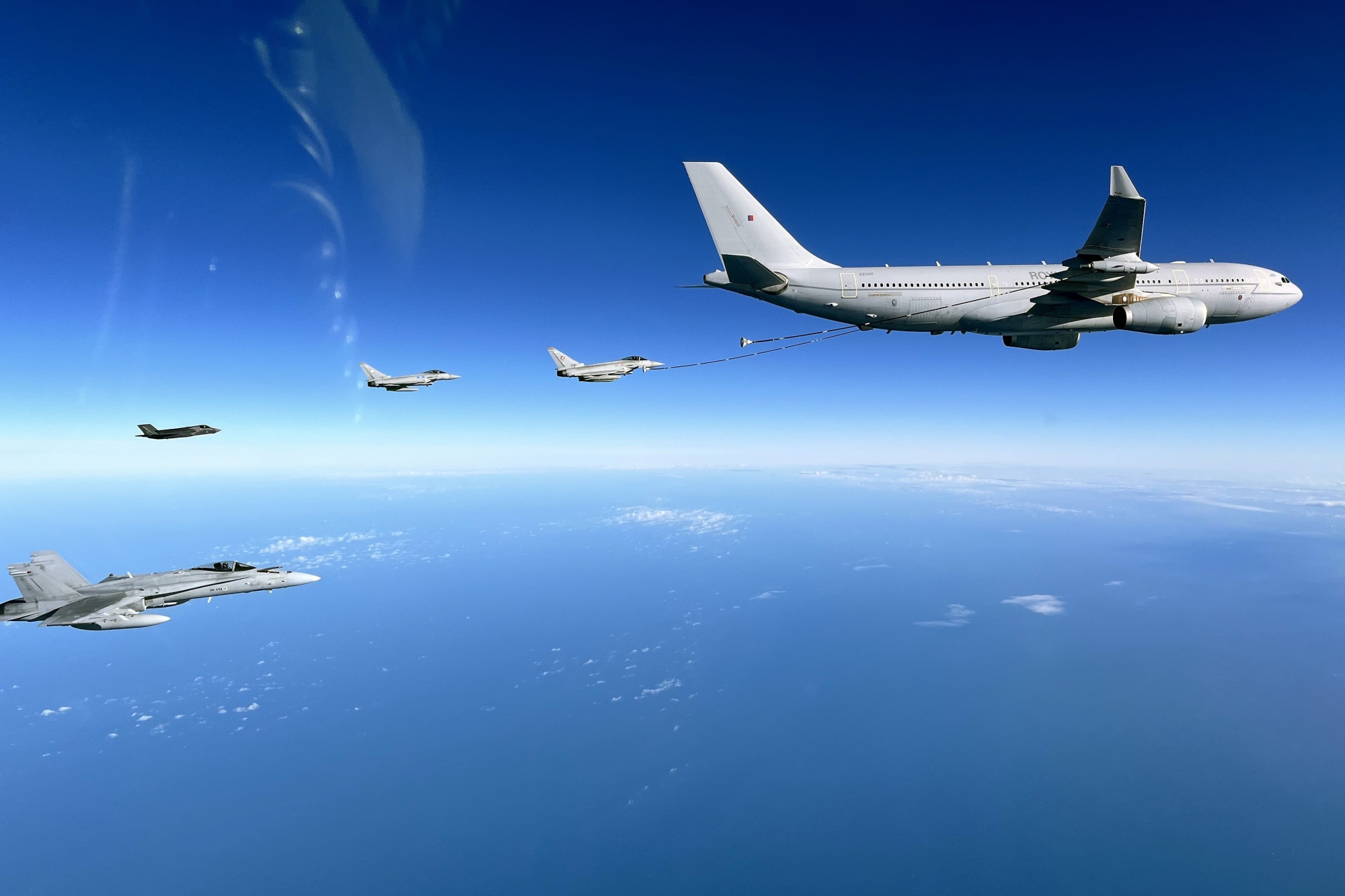Air-maritime force integration in the Strike Warrior exercise
The Finnish Air Force took part in the air operations of the Royal Navy’s Strike Warrior exercise between 14 and 25 October 2024.

At the end of the Cobra Warrior exercise on 4 October 2024, four Finnish F/A-18 Hornet fighter jets remained at RAF Waddington to participate in the air operations of the Strike Warrior exercise. The almost two-month deployment to the United Kingdom provided the Finnish fighter detachment with new experiences in cooperation with the air and naval forces of a key NATO ally.
For the Finnish Air Force, the objective of the air operations of the Strike Warrior exercise was to train air-maritime force integration with the UK Carrier Strike Group. During the exercise, the Royal Navy’s 809 Naval Air Squadron, equipped with the F-35B Lightning II fighter jet, operated for the first time from the flight deck of the aircraft carrier HMS Prince of Wales. This provided an opportunity to train both air-maritime force integration and fighter integration of 4th and 5th generation jets.
‒ The air operations of the Strike Warrior exercise were executed as planned. We gained good new experiences in coordinating air and naval operations with the Royal Air Force and the Royal Navy. In addition, we were able to train together with the F-35B fighter jets operating from an aircraft carrier and to maintain our pilots’ air-to-air refueling qualifications during all the missions, says commander of the Finnish fighter detachment, Lieutenant Colonel Lasse Louhela, Commander, Fighter Squadron 11, Lapland Air Wing.
Wide-ranging lessons for the Finnish Air Force
Executed together with the Royal Air Force and the Royal Navy, the air operations included mission types such as Offensive Counter-Air (OCA), Air Interdiction (AI) and Suppression of Enemy Air Defences (SEAD).
‒ The cooperation with the Royal Air Force and the Royal Navy was professional and smooth, although contacts with the aircraft carrier at sea were somewhat limited. The scenarios of the training missions were modern, realistic and challenging. For example, we carried out an OCA operation with Finnish F/A-18 Hornet fighter jets and British F-35B Lightning II jets from the aircraft carrier HMS Prince of Wales on the “blue” side. The “red” side, simulating the adversary, included RAF Typhoons and L-159 jets operated by Draken International, a company specialized in providing “Red Air” services. The mission was also supported by an RAF Voyager air-to-air refueling tanker and a NATO E-3A AWACS aircraft, Lt Col Louhela says.
The combination of the Cobra Warrior and Strike Warrior exercises provided an opportunity for wide-ranging development of the Finnish Air Force’s deployment and operational capabilities. Lapland Air Wing had the primary responsibility for the almost two-month long deployment, but the fighter detachment also included personnel from the other units of the Air Force.
‒ All the branches and personnel of the detachment did an excellent job in the UK throughout the long deployment. In addition to successful operations, we were able to identify lessons for improvement for future international deployments, such as options for the implementation of medical care, logistics and C2, as well as the detachment’s self-sufficiency rates of materials, Lt Col Louhela says.
Cobra Warrior provided experience in large-force multinational air operations
Navy’s new fast jet squadron debuts at sea as 809 NAS join HMS Prince of Wales



